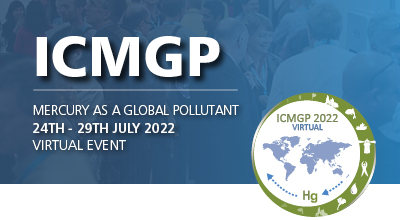| Abstract Title: | Volcanic exhalations of mercury in the Mozambique Channel |
| Presenter Name: | Isabel Garcia |
| Company/Institution: | IFREMER, CCEM Contamination Chimique des cosystmes Marins |
| Session: | Atmospheric Hg cycling: Source and Emissions |
| Co-Authors: | Isabel Garcia Arevalo1, Jol Knoery1, Bastien Thomas1, Natalia Torres Rodriguez2, Lars-Eric Heimbrger-Boavida2, Cecile Cathalot3, Emmanuel Rinnert3, and the Geoflamme shipboard scientific party |
Abstract Information :
Volcanic and geothermal sources of mercury in the environment are important but still poorly constrained due to variable degassing features. These and the logistical difficulties in conducting the pertinent research, specially within the marine environment, lead to considerable uncertainty in global geogenic mercury fluxes estimations. Nevertheless, information on those natural inputs is needed to better estimate the anthropogenic Hg enrichment, and thus for the implementation of the Minamata Convention. During spring 2021, the GEOFLAMME campaign on board ?R/V Pourquoi pas?? took place at the Northern Mozambique channel, where the volcanic exhalations from a newly-formed volcano near Mayotte Island and the overlying water column geochemistry were studied. Water samples were obtained with a trace-metal clean CTD rosette and all-titanium syringes using a remotely operated vehicle. Shipboard measurements of dissolved mercury, and dissolved gaseous mercury were measured by cold vapour atomic fluorescence spectroscopy, while methylated mercury levels were measured by hydride generation cryotrapping Atomic Fluorescence Spectroscopy within three months at the shore laboratory. In line with previous estimations of volcanic sources, the mercury levels of post-eruption prevailing volcanic exhalations were in between 6 to 60 times higher that seawater samples. Even though mercury levels measured in the water column showed increased concentrations near the bottom, these concentrations are not markedly higher than deep seawater profiles from other oceanic basins. This could indicate rapid scavenging of mercury and possible sorption onto other plume components. This study provides insight to the understanding of mercury interactions of fluids circulation processes of volcanic origin, as well as the implications on the physical-chemical properties of the water column and the ecosystem. Moreover, it contributes to sources knowledge improvement in present-day mercury cycling in the marine environment.



